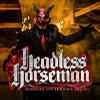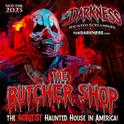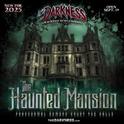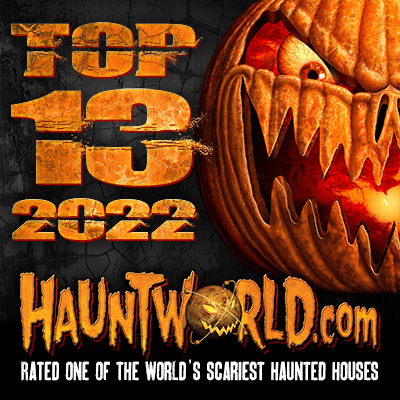
Escape Rooms
|
As many of you know, escape games are opening all over the country and the haunt industry has taken notice. Some of you have contemplated opening up one of your own and wondered if it’s a good business decision. Can they actually make enough money to sustain themselves and make a profit? Is it worth the investment in time, money, and energy to jump in right away or is it the latest short term fad that will be over and done with within a year or two?
When I talk to other haunters about it, the number one reason NOT to open one up is throughput. While it’s true that an escape game could never bring in the huge numbers of a haunted house in October, the fact that it MAKES MONEY YEAR ROUND with only a fraction of the operational cost of a haunted house makes for a very attractive idea for most of us.
I found out about escape games a few years ago when a friend sent me an article about one in Canada. I instantly loved the idea and started reading everything I could find on the subject. From a design standpoint, I got really excited. Images of all the cool things I could never create in the haunted house because of throughput came to mind. A game where customers could actually take their time to explore and interact with the environment seemed like a fun business to me and an easy transition from what we were already doing at the haunted house. I started seriously thinking about opening one.
Since I knew absolutely nothing about escape games, the first thing I needed to do was some major research. Although the US escape game industry is growing rapidly with new locations opening almost daily, they are still fairly scattered. If I wanted to see as many as possible in a short period of time, I would have to go to another country. Slightly ahead of us is Canada, which saw their boom of escape games come in a few years ago. Surprisingly the Canadian escape game industry, although still young, seems to be thriving and continuing to grow with major cities supporting large numbers of attractions. The greater Toronto area for example, boasts over 45 escape game companies! Most facilities are running multiple games at one time.
So I called a few fellow haunters and off to Toronto we went and after three days playing 17 games (both good and bad), I thought I had a basic understanding of the game mechanics and puzzle design. Most of the games we played were very addictive and fun with inventive puzzles and storylines. However, what really struck me immediately was that few had any real set design or the detail that you would find in a haunt (the one exception being Escape Games). It quickly became apparent to me that American Haunters would bring this new industry to a much higher level than it had ever been before.
As soon as I returned to Louisiana, we started designing and building our facility. Six months later, over budget and out of time, we opened our first two games with a very successful launch. Every day we are learning and tweaking and making minor changes but overall I am extremely pleased with the results. It’s a blast to run, it’s easy and cheap to operate and maintain, it makes good money and everyone who plays an escape game seems to love it. My only regret is that I don’t have six games running instead of just two (we will open two more as soon as haunt season is over).
So should you open one?
The short answer is absolutely, if you do it the right way. And by the right way I mean put in the time, energy, money, blood, sweat and tears it requires and avoid all temptations to cut corners. Look at it like a haunted house. You get back exactly what you put into it and if you are doing it just to make a quick buck and don’t do your homework, like any business, you could easily fail.

Therefore, if you decide to open your own escape game, here are a few tips that we have learned that might help you:
Do your research and become a player FIRST. See and play as many as you can, even the bad ones. You will learn more from the experience than from anything else. Also being a player first helps you understand your customer’s needs and what they would want in an escape game.
Plan Ahead: Treat an escape game just like a haunted house when it comes to the planning stages. First stop should be to see your State and local fire marshal. Although you hopefully won’t be required to meet assembly classification (most Escape Games fall under Business classification by keeping the total building capacity under 50 at any one time), you still will have many fire and safety requirements to meet. Also, there is ABSOLUTELY NO REASON TO REALLY LOCK SOMEONE IN A ROOM. For one, if you tell your fire marshal that you are doing that, don’t expect to open. Secondly, it’s not necessary. For us, the door you enter is the door you can leave at any time and it’s never locked. We tell
our customers to ignore it unless there is an emergency. It’s not part of gameplay and it’s not the way to escape the room (we have another way for that). Customers have no problem ignoring it.
Location: Most haunters are putting escape games in the same location as their haunt. This works great if your haunt is located in an area that is easily accessible. High traffic areas, safe downtown locations or tourist spots seem to do the best. If your haunt is rural or hard to find however, you may have difficulty getting customers to come out off-season.
Budget Accordingly but make a meaningful investment. How much should it cost? That depends on many factors including number and complexity of games, market size, location, etc. However, don’t do what I see many escape game companies doing, going cheap. What might work in other countries, won’t fly for long here. Your customers expect and deserve more. I’m a firm believer that if you don’t make a substantial investment in your attraction (be it an escape game or haunt), then you shouldn’t expect a substantial return.
DESIGN
Facility: This can vary in size but make sure you have these key elements: A clean waiting room with at least two restrooms and a receptionist area to check people in, a control room for camera monitoring, a store room for extra props, and of course the game rooms. The best games seem to be 2-5 rooms with a total square footage of 600-900 sq. ft. Some facilities also have a mission room for briefing players before or after the game.
Set Design: This is where haunters are going to blow the top off of the escape game industry. Realism is severely lacking in most escape games. Make sure to build in a few “wow” moments like when a secret door reveals itself or for an ending when the players win the game.
Storyline: Create a unique believable, immersive story that fits the overall theme and set design. Make the game mechanics fit the story you create and make the players a part of that story.
Puzzles: This could be an entire article in itself but generally I have tried to keep all of my puzzles realistic, matching the theme of the room, and in line with the current storyline. In other words, don’t put a modern combination lock in a medieval dungeon-themed game. Try to integrate your puzzles into the storyline for the most immersive game possible. Vary your puzzle design, focus on originality and promote teamwork. Beta test everything to make sure your puzzles aren’t too hard or too easy. Above all else, make it fun.
Number of Players Per room: I’ve seen a trend to cram as many players into a room as possible to make as much money as possible. Unless you have massive rooms, anything over 10 players is way too much. If you have players standing around watching other players, there are too many people in your room.
Difficulty Level: This is extremely important to the fun factor. Make it too easy and people won’t find it challenging enough and will consider it boring. Too hard and they will be frustrated. A good standard is a 10-25% success rate.
Beta Testing: We did several weeks of extensive beta testing and found some major flaws in our game. If you want to have the best game possible, this is a must. After you work out most of the bugs, invite the media to come out to be your final beta testers (and hopefully get a great story out of it right before you open to the public).
Build it right the first time: Think about the most destructive customers you have ever had going through your haunt. Now think about locking them in a room in your haunt for an hour. Would your set survive? Probably not. Build your escape game gorilla proof. Screw or bolt everything down. Then, make sure you have at least one other copy of every essential prop or game piece on hand. The number one problem of all escape games is destructive players.
Staff it with the right people: Pick a team who can represent your company well and will work great with the public. Find Game masters who are patient with difficult or destructive players, technically savvy, and can rebuild anything on the fly.
Pricing: I’ve seen escape games priced as high as $50! Although all markets are different, I believe this is way too high. Many successful games are comparable to a haunted house ticket. Our games are priced at $28 plus tax per person and it seems to be the perfect price for us.
Advertise: Advertising for an escape game is a bit different than for a haunt.
Word of Mouth: Because this is a completely new form of entertainment, people are really excited about it and therefore word of mouth is king. This is where it’s really important to have great customer service and to give every single customer the most consistently positive experience possible. When they leave your game, they are going out advertising to
everyone they know for you for free. Make sure you control the message by doing the best escape game possible. Remember that you are working with smaller numbers here, so unlike the haunted house, if you upset too many customers, it can have immediate negative results to your bookings. Every customer counts in the Escape Game business.
Website: Make a separate website from your haunt but link the two. Keep the site interesting but simple. No need for expensive flashy complex sites. Also, no need to pay for an online ticketing company. Bookeo is a great tool for online bookings that integrates perfectly with your website and Facebook page and has great functionality. There’s a reason why almost all escape games use it. At a flat rate of $39.95/month per 1000 games booked, it’s hard to beat.
Social Media: Escape games live and die by social media and online reviews like TripAdvisor and Yelp more so than haunted houses. Although the jury is still out about the current effectiveness of Facebook with haunted houses, we have had a lot of success with Facebook for our escape game. Make sure you create a separate Facebook page just for your Escape game apart from your haunt. YouTube and Instagram are also working great for us. Once you start your new pages, cross promote using your haunt Facebook and website.
Traditional Advertising: I know of several escape games who are doing great without spending a single dime on ANY advertising. Personally, I spent some on radio and had positive results with it. According to my customers, the top three referrers were Word Of Mouth, Facebook, and Radio in that order. However, every market is different.
Branding: If you already have a successful haunt, name your escape game using the name of the haunt in it. For example, our escape game is called, 13th Gate Escape. We have worked really hard to brand our haunt, why not continue that momentum instead of starting over from scratch. However, still promote your escape game as a separate entity otherwise people will expect it to be scary or be confused about what exactly it’s supposed to be.
Demographics: Looking at the groups that have come through so far I would say that most are the same demographics as the haunted house. Many are dating teens, young adults and families (more so than the haunt). Because your game themes can vary, you will also get customers who would never go to the haunted house because they are too scared.
One other big addition to this is corporate team-building groups.
No one knows whether the new US escape game industry has lasting power, but it’s definitely something that haunters can easily put together with the right commitment and make profitable. Not only that, our industry can and will take escape games to a completely different level that no one has ever seen before using realistic detailing and special effects that we already utilize in our haunts. Escape Games are a perfect additional business for a haunt owner.









































